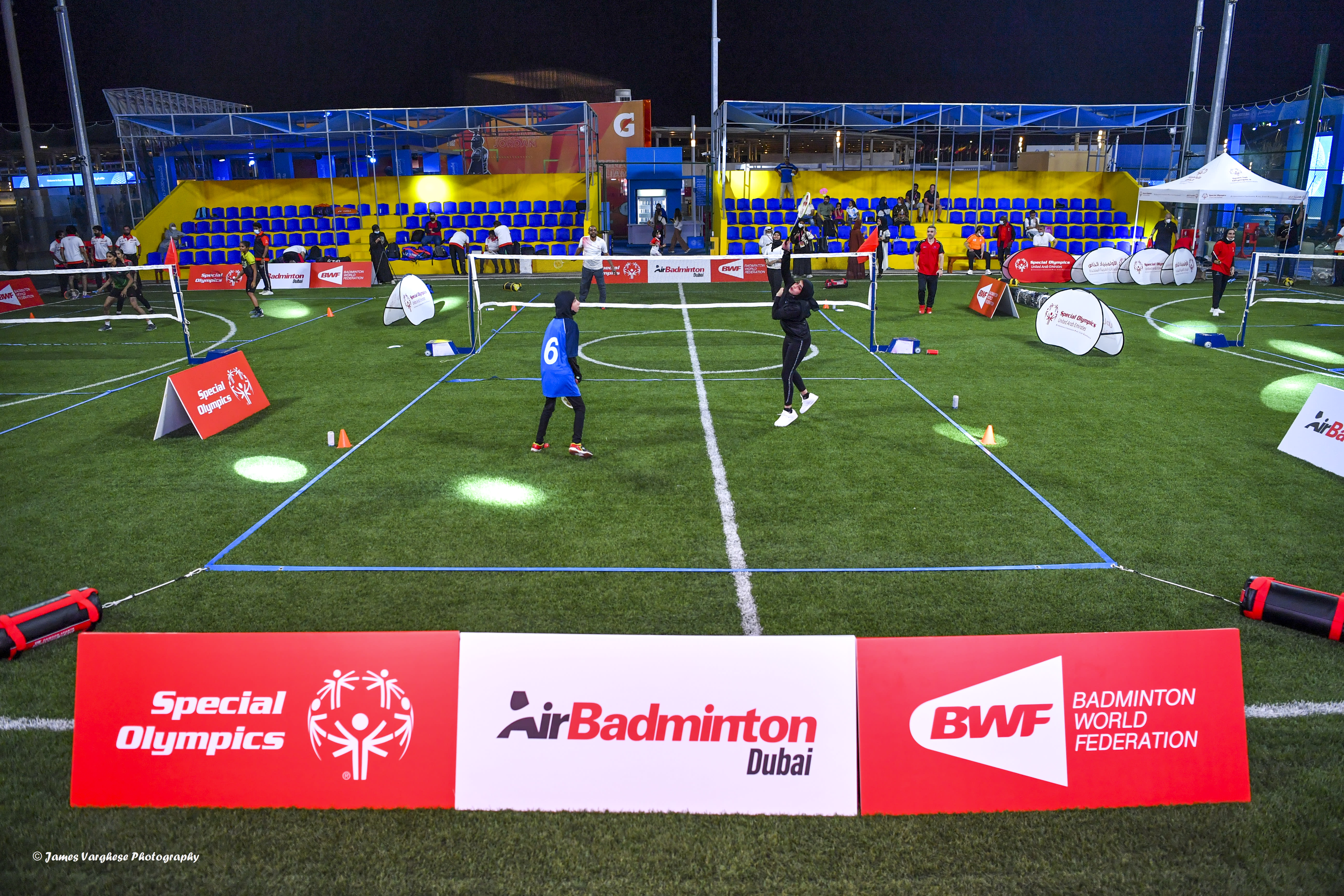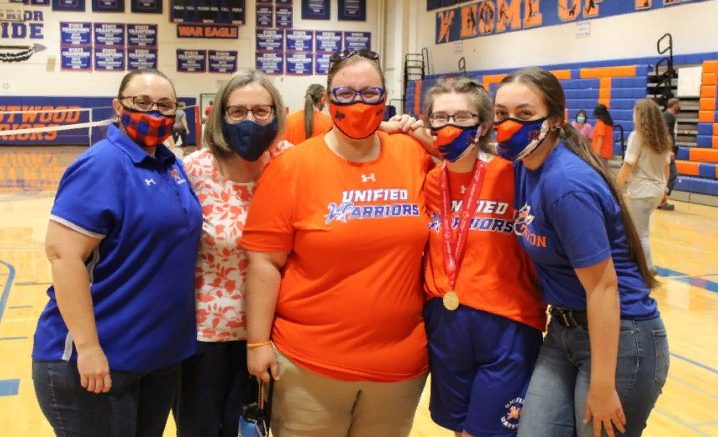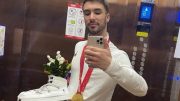Badminton is being promoted by Special Olympics and the Badminton World Federation
Special Olympics and the Badminton World Federation are collaborating to bring the sport and its benefits to a new generation of athletes.
The Bowmans are a family of badminton players. From the time Meg Bowman began playing in her junior year of high school until now, the sport has been a big part of their lives.
My sister Katie won the state championship and was inducted into the Mesa [Arizona] City Hall of Fame. Rachel, my second daughter, has been a Westwood badminton player for four years, and my mother is the biggest badminton fan I know.
Despite this, Meg’s daughter Jayne was not a fan of the sport at first. She wasn’t much of a sports fan, but badminton was being played at a Special Olympics event Meg and Jayne attended two years ago. Jayne stood there watching and telling her mother, “I want to do this,” kicking off an important and transformative process.
Special Olympics is collaborating with the Badminton World Federation to expand the sport’s reach so that many more people can have similar experiences as Jayne and Meg did that day two years ago.
Though badminton is a popular sport all over the world and is offered in Special Olympics programs all over the world, it is not as popular in the United States. However, there are numerous reasons why its supporters believe badminton is a good fit for the Special Olympics and is poised to gain a large number of converts.
According to Special Olympics representatives I spoke with, badminton is especially beneficial for athletes on the autism spectrum due to its emphasis on attention, eye contact, and long-term focus.
It also helps to develop a variety of other skills, such as hand-eye coordination and upper body movement. It is a non-contact sport that is more accessible than many other sports because it requires fewer participants and less equipment. It is also possible to play in relatively small spaces, both indoors and outdoors.
So, what steps are being taken to spread the sport? Representatives such as John Shearer, Senior Development Manager at the Badminton World Federation, are spreading the sport in two ways. First, they are organizing badminton tournaments in as many locations as possible.
These are not only championship events, but also grassroots badminton promotions in schools and clubs. The goal is to get people to try it for the first time, with the expectation that once they do, they will want to keep playing.
Second, once people are introduced to the sport, resources such as teaching and coaching materials are made available to them so that they can deepen their relationship with and participation in the sport.
The goal is not so much to emphasize it in regions where it already exists as it is to introduce it to new regions and countries, demonstrating what the game can offer. An example of how this could work is Arizona, where the sport has flourished.
Badminton was taught in schools and organized into clubs there. It was simply a matter of finding a variety of ways to introduce the sport to new players and then allowing it to grow organically from there for leaders and coaches. It is hoped that this will serve as a model for future success elsewhere.
Of course, the emphasis is not solely on the number of participants. “Numbers are one piece; quality is another,” says Maggie Brennan, Special Olympics’ manager of sport development. So, what exactly does quality entail?
A good coach-to-athlete ratio; a high frequency of participation; the impact a sport has on athletes; and athletes’ access to a support network.

James Varghese
“We are attempting to shift views toward individuals with intellectual disabilities in a positive way, and the way to accomplish that is to engage people,” says Jon St. Germain, Senior Director of Unified Sports and Sport Partnerships at Special Olympics International.
We believe that by involving more people in the cause through Unified Sports, we will be able to change attitudes and create a greater sense of urgency. The game is designed to be competitive, but the most important aspect is that each participant should have a significant impact on the outcome. Meaningful participation is the yardstick by which success is measured. “
However, there are certain difficulties in teaching badminton. “The tough thing about badminton, especially doubles,” says Meg Bowman, “is that most of these youngsters have never heard of badminton and, if they have, they are unfamiliar with the rules. “( The WBF can help with this because they have resources and coaches who can help athletes get used to the sport, which is why they can help.
Badminton aligns perfectly with the goals of Special Olympics Unified
According to Special Olympics Senior Vice President Jason Teitler, badminton is a natural fit for the Special Olympics Unified strategy, which aims to create spaces where people with and without intellectual disabilities compete and play together.
This type of play encourages inclusion while also assisting people with intellectual disabilities in becoming a part of a larger community and bringing others into their environment. Because unified events follow the same set of rules for everyone, teammates can learn more about their similarities than their differences, potentially paving the way for friendship.
Jayne Bowman grew up with a badminton birdie in her hand and surrounded by badminton fans, but it wasn’t until she joined Unified Sports that she fell in love with the sport. Meg Bowman, her mother, emphasizes the importance of finding partners who want to play and work well together, players whose personalities complement one another and who get along.
That is how the best friendships are formed, and that is how Jayne feels about her unified partner, Harleigh. Harleigh “knew all the rules” and “made me giggle,” Jayne claimed, inspiring her to “dance off setbacks” and pose in ways that “frighten” their opponents.
According to Meg, it was an example of “lovers becoming lifelong friends.” “Seeing that as a mother was incredibly special.” Jayne and her family have benefited greatly from participating in unified sports. Jayne’s speech habits and how she refers to herself have changed since that day. She sees herself as an athlete on par with Rachel, and she refers to our family as “badminton players.”
A photo of Jayne Bowman with her mother, grandmother, aunt, and sister was shot at one of her tournaments. As she reflected on that time, “To me, that photo simply means everything to me because it shows what Unified has given us as a mom, as a family, as a coach,” Meg said as she reflected on that moment.
What we’re doing on the court is a small part of Unified. It’s very profound, and it lasts a lifetime. ” These are the kinds of moments that Special Olympics and the Badminton World Federation hope to create for athletes all across the world in the future.
“Unified Sports brings together athletes and partners.” It brings together coaches and athletes. In my situation, and perhaps most crucially, it has brought our family closer together in ways we never imagined. “
“The way we look at sports is for everyone to have an opportunity to play,” Shearer added. This is a start in the right direction toward giving individuals that opportunity.




